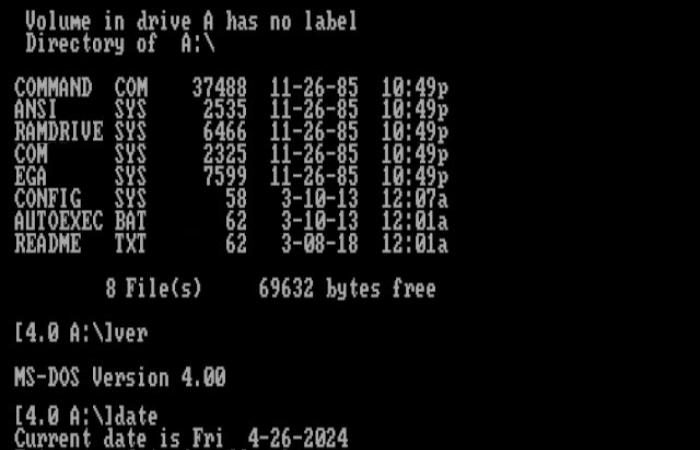Introducing the MS-DOS operating system here would probably be the proverbial carrying firewood into the forest, because it is not some fringe exotic, but a system that was synonymous with the PC platform between 1981 and 1995, so let me just briefly summarize its history.
When IBM planned to finally enter the booming microcomputer market in the very early 1980s, it looked for an operating system. The obvious choice at the time was CP/M in the planned version of CP/M-86, but negotiations with the author Gary Kildall and his company Digital Research led nowhere – at that time IBM still wanted to buy the system, not license it, and Kildall was against selling his main source of livelihood, especially since he was making more than enough profits at the time from other platforms that CP/M supplied to.
So IBM kept looking and at that point Microsoft entered the game, known at the time mainly as a supplier of the BASIC programming language interpreter for computers based on virtually every 8-bit processor in existence at the time, i.e. Intel 8080/8085, Motorola 6800, MOS 6502 and Zilog Z80. IBM first agreed with them to supply BASIC for the 8088 as well, but Paul Allen and Bill Gates eventually negotiated the licensing of the MS-DOS operating system, which IBM had the right to sell rebranded as IBM PC DOS, and they were little interested in the fact that at the time no such they didn’t have an operating system.
They acquired it very quickly – they bought a license for the 86-DOS system from Seattle Computer Products, paid for its portation for the IBM PC, and subsequently bought the entire product and renamed it to MS-DOS. 86-DOS (internally called QDOS – Quick and Dirty Operating System) was originally created as an independent implementation of the CP/M API according to the CP/M manuals, so IBM’s main requirement was that the new system look and behave like something the market already accustomed, was fulfilled. The authors of CP/M understandably did not like it, but since it was not possible to prove a direct copyright infringement, they finally settled for an agreement that IBM would offer their system as a variant – because they did not believe that MS-DOS and the whole PC as a platform had any special great future.
However, they were badly mistaken, thanks to cheap Asian clones, the PC became the worldwide dominant desktop platform within a few years, and MS-DOS essentially became the standard operating system, the commands of which were taught in the subjects named Computer Science and Computer Technology even in the second half of the nineties. By that time, however, MS-DOS was skillfully hidden somewhere under Windows 95 or Windows 98, and since the unification of Windows over the NT kernel, it remains at most the command syntax in cmd.exe to this day.
In 2014, Microsoft started to publish the assembler source files of the system in versions 1.25 and 2.0 through the Computer History Museum project, after about four years it also put them in its own GitHub repository. And this week, in cooperation with IBM under the MIT license, he also published version 4.0.
This version is particularly interesting because it was a very buggy product at the time. At that time, Microsoft had a different idea about the continuation of the system than IBM had – the goal of MS was to create a multitasking variant, which they called MS-DOS MT 4.0. However, IBM was not interested in it, and practically no OEM manufacturer followed its example, instead IBM worked independently to improve the previous version 3.x and later released all these improvements as IBM PC DOS 4.0 (and MS later as MS-DOS 4.0, although in he had practically no modifications of his own to this version).
So in this one version, DOS was split, there was a lot of confusion about it, both versions introduced new bugs and incompatibilities, so both companies agreed to stop these attempts, in version 4.1 they will unite everything again into a single single-task form and experiment leave to the joint development of a completely new system, called OS/2.
The source codes of the multitasking version could not be found in the Microsoft archives, but the source code of the classic version was found and is therefore freely available. It is mentioned in the repository that pull requests with changes will not be accepted, but if someone is interested in creating their own fork and developing it further, they will not be prevented.






